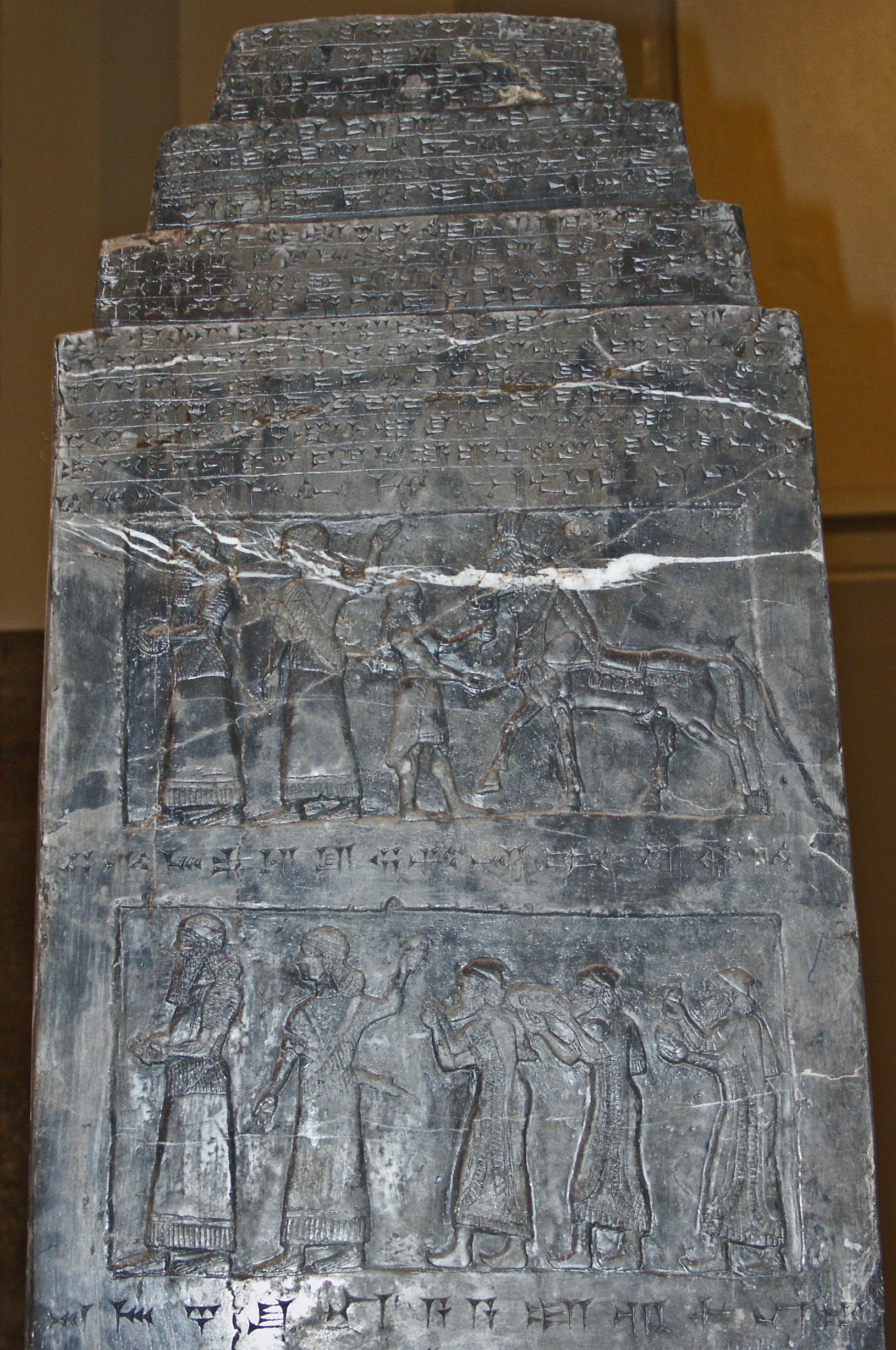The Black Obelisk
Artifact: Stone monument
Provenience: Nimrud
Period: Neo-Assyrian (ca. 911-612 BC)
Current location: British Museum, London
Text genre, language: Royal inscription; Akkadian
CDLI page
Description: The Black Obelisk of Shalmaneser III (ruled 858-824 BCE) represents a perfect blending of word and visual in a demonstration of Assyrian power and superiority. Approximately six and a half feet tall and carved out of black limestone, depictions of foreign emissaries delivering tribute are spread over five registers each stretching across its four sides. Captions to the images boast of the tribute and its origin, while a cuneiform inscription at the top and bottom of the obelisk recounts the military campaigns of Shalmaneser III's reign up to its thirty-first year. The obelisk dates to 825 BCE, towards the very end of his reign when he was embroiled in a civil war. Animals who are brought as tribute include camels, an elephant, a rhinoceros (carved, quite clearly, by an individual who had never seen one) and apes, depicted as stooped humans with dog-like faces. The obelisk glorifies not only king Shalmaneser III, but also his military commander Dayyan-Assur, who may have had a hand in its creation.
The Obelisk is also notable for its mention of King Jehu of Israel (‘Jehu, son of Omri’, ia-u2-a mar hu-um-ri-i). The first visual image of an Israelite in history depicts him (whether Jehu himself or emissary is unclear) on his hands and knees grovelling and offering tribute to Shalmaneser III. (Eva Miller, University of Oxford)
Lineart:
Edition(s): Grayson, A. Kirk. 1996 RIMA 3.0.102.014, ex. 01 (Black Obelisk)


